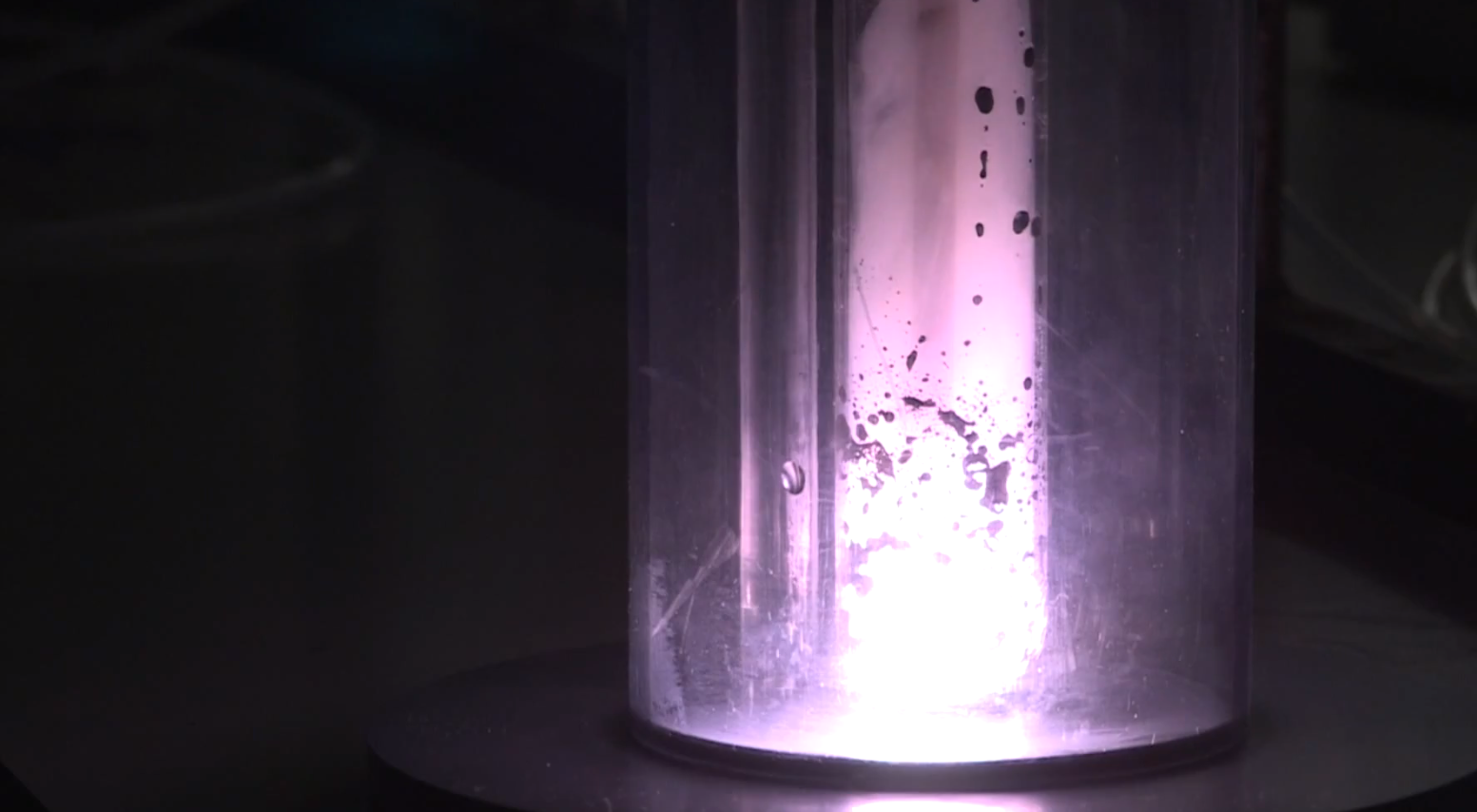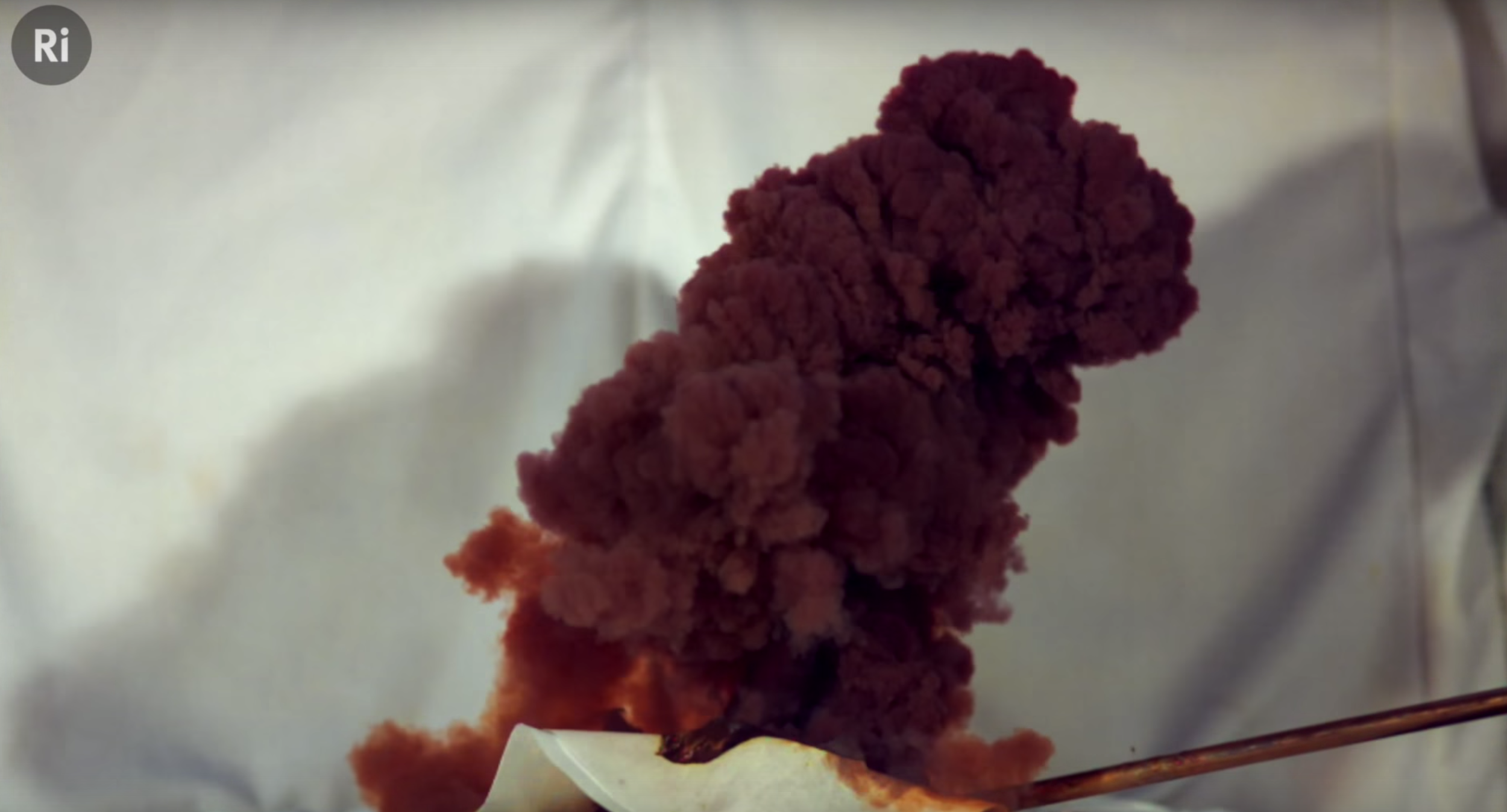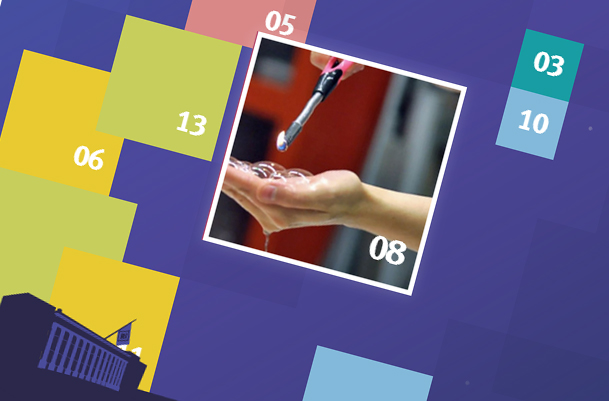How a simple invention saved the mining industry from devastating accidents.
Read MoreVIDEO: Slow motion chemistry and explosive BBQs!
Slow-motion science!
Read MoreVideo: X-rays reveal dance of electrons!
New research freezes the rapid movement of electrons
Read MoreVideo: Structure and Order - A Century of Symmetry
Chemical crystallographer Judith Howard reflects on the beautiful aesthetics of crystallographic exploration and her career, including time spent with Nobel laureate Dorothy Hodgkin. http://www.youtube.com/watch?v=mmSMt-jU9iE
The end of the video provides links to some of the other videos in the crystallography collection!
Crystal Clear: Exploring Crystallography on Film
X-ray Crystallography - ever heard of it? Perhaps not, but it's arguably one of the most important scientific breakthroughs of the 20th Century. Why? Well, it's an incredibly powerful technique that allows us to look at really small things, like protein molecules or even DNA! Once we know how these molecules are assembled, we can begin to better understand how they work. How does it work? Essentially you take your sample, crystallise it and then fire X-rays at it. You then measure the way in which the crystal scatters or diffracts the X-rays - the resulting 'diffraction pattern' is what you need (and a bit of maths) to work back to the structure of the molecules that make up the crystal. So in theory, as long as you can crystallise your sample - you should be able to work out the molecular structure!
To find out more watch this simple animation we recently published:
https://www.youtube.com/watch?v=uqQlwYv8VQI
The technique was developed over 100 years ago and it has led to some incredibly important discoveries, including the structure of DNA - since it's inception, work relating to Crystallography has been awarded 28 Nobel prizes. To mark the continuing success of Crystallography - we received funding from the STFC to produce a series of films that helped explain and celebrate this technique.
The above animation was scripted in house and animated by the awesome 12foot6 - it also features the voice of Stephen Curry, a structural biologist based at Imperial College London.
Understanding Crystallography
I produced and directed this two-part series, working with Elspeth Garman of Oxford University and Stephen Curry. The two pieces aim to explain how the technique works and what's needed to grow your crystals and subject them to X-ray analysis. The films take us from a microbiology lab at the University of Oxford to the Diamond Light Source, a huge facility that hosts a particle accelerator designed to generate incredibly powerful beams of X-rays.
As always, the hardest part in producing these pieces was in deconstructing the explanation of what is a very complicated process... hopefully we pulled it off - see for yourself below!
Part 1 - why proteins need to be crystallised and how this is done.
http://youtu.be/gLsC4wlrR2A
Part 2 - what it takes to shine x-rays at your crystals and how we work back from diffraction patterns to determine structures.
https://www.youtube.com/watch?v=WJKvDUo3KRk
Crystallography and beyond
Producer Thom Hoffman also worked on this project - he produced two pieces, one exploring the history of farther and son team who helped develop the technique
https://www.youtube.com/watch?v=z-ZnLtFgGwY
and the other looking at the application of this technique on the recent Curiosity Mars rover.
https://www.youtube.com/watch?v=lr_PDXyNu1E
Video: Exploding Baubles at 34,000 fps!
Capturing exploding baubles with a high-speed camera
Read MoreToo Hot to Handle: The Science of Fire Breathing
Fire breathing - it all hinges on the oxygen in the air.
Read MoreFlame'n Elements
Filming flame tests with Group 1 Alkali Metals.
Read MoreChristmas Lectures 2012 - Behind the Scenes
The Modern Alchemist
One of the great pleasures of working at the Royal Institution is witnessing the frenzy that goes on behind the scenes in the lead up to the Christmas Lectures. This year the lectures cover the chemical elements and are presented by Dr Peter Wothers, a fellow of the Royal Society of Chemistry and teaching fellow at the University of Cambridge.

The lectures themselves are available for a limited period on iPlayer, but will also be available to stream indefinitely on the Ri Channel, the team behind them have done an incredible job and so they're well worth a watch - you don't necessarily need any scientific background or knowledge of Chemistry to enjoy them!
Naturally this year's subject lends itself well to the presentation of scientific demonstrations and there has been plenty of opportunity for loud bangs and fire spewing explosions. However, the lectures have also provided chance to perform some very rare and unusual demonstrations - and it's these that have formed the subject of a couple of behind the scenes films produced for the Ri Channel:
Reacting Caesium and Fluorine (First time on camera)
Fluorine and Caesium are the two most reactive elements in the periodic table and so for the lectures, Peter was very interested in trying to react them both together. However their extreme reactivity also means that they're both very dangerous to work wit, so it was important Peter found the right person to work with! Enter Dr Eric Hope a Fluorine specialist at the University of Leicester and so on a grey day in November we travelled up to see how this reaction might work and I think it might be the first time it has ever been caught on camera!
http://www.youtube.com/watch?v=TLOFaWdPxB0
What was particularly nice about this meeting was that Peter had never previously seen Fluorine and Eric had never seen Caesium! This demo features in the second lecture, 'Water: The Fountain of Youth'.
Cloud Chamber
I was so pleased I got to see this demo with my own eyes, I'd previously heard a lot about cloud chambers and seen a few bits of ropey footage on the internet, but never actually seen one in the flesh (so to speak). It's essentially a particle detector with a sealed environment that is supersaturated with alcohol vapour and as charged particles zip through the vapour they ionize it, allowing condensation trails to form.
It's an absolutely beautiful thing to look at, as it makes visible the background radiation that exists all around us and on the last day of recording I was lucky enough to capture this close-up on camera:
http://www.youtube.com/watch?v=-OtiTeNWPH4
This demonstration features in the third lecture entitled 'The Philosopher's Stone'.
Testing Hydrogen Balloons
Lastly, the Christmas Lectures wouldn't be complete without some sort of gratuitous explosion and so here's a little film about testing different sized hydrogen balloons:
http://www.youtube.com/watch?v=nLuOM9aOWvk
24 Films for Advent...
...or how to kill yourself slowly before Christmas.
With the 2012 Royal Insitution Christmas Lectures exploring the chemistry of the modern world, we wanted to produce a suitable project to promote the lectures online.
So for the last two months I have been working frantically to create 24 short films, each asking a bunch of well known scientists, science communicators and famous faces what their favourite element is - the films are being released daily and are housed within a beautiful interactive advent calendar built by Archive Studios. View the advent calendar here.
Trailer for the series:
http://www.youtube.com/watch?v=LCRzwOOd_y8&list=PLbnrZHfNEDZzGSpz8MSKaiwChs-7vH_f8&index=1
It's a bit of a silly question so the films are all a bit tongue in cheek to a certain extent, but there's a nice variety across them - from simple pieces to camera, to more involved short films centered on specific elements. The films also include a lovely animated ident produced by the friendly folks over at 12foot6.
The idea for the series came from a question posed to interview candidates for the Christmas Lectures Researcher role - who were asked what their favourite element was and why - the answers given were often surprisingly personal and often witty, it seemed like a great way to explore the elements from a very personal perspective.
We've worked hard to produce a nice variety across the films to avoid repeating the same format - hopefully this will encourage people to keep checking back on a daily basis! The series also includes a huge range of individuals including, amongst others: Brian Cox, Mark Miodownik, Dick & Dom, Helen Czerski, Dara O Briain, Liz Bonnin, Andrea Sella, Jerry Hall and this year's Christmas Lecturer, Dr Peter Wothers. We hope there are a few surprising faces amongst the line up.
My favourite films of the series so far are...
Andrea Sella in the glassblowing workshop:
http://www.youtube.com/watch?v=6Ul8CmUkO4E
Helen Arney's Boron Song:
http://www.youtube.com/watch?v=mvqrcW77nFM
Jerry Hall talking about Copper:
http://www.youtube.com/watch?v=DBJAbSWrymI
Helen Czerski's piece on Calcium:
http://www.youtube.com/watch?v=EMNuYOEBOWI
Tech stuff:
The films were pretty much all shot on a Panasonic AF101 - using a range of lenses, however mostly with a Panasonic Lumix 12-35mm lens. For a couple of the films I was lucky enough to work with BBC producer Tom Hewitson, who brought with him a Cannon XF305. Sound was recorded via Sennheiser ew100 G3 wireless radio mic set and also with a Rode NTG-2 shotgun mic. Edited on FCPX and exported as 720p, h264. The films can also be viewed on YouTube and on the Ri Channel.
Hope you enjoy them!
Video: The Alkali Metal Match
Lighting a match with a single drop of water, sort of...
Read More










